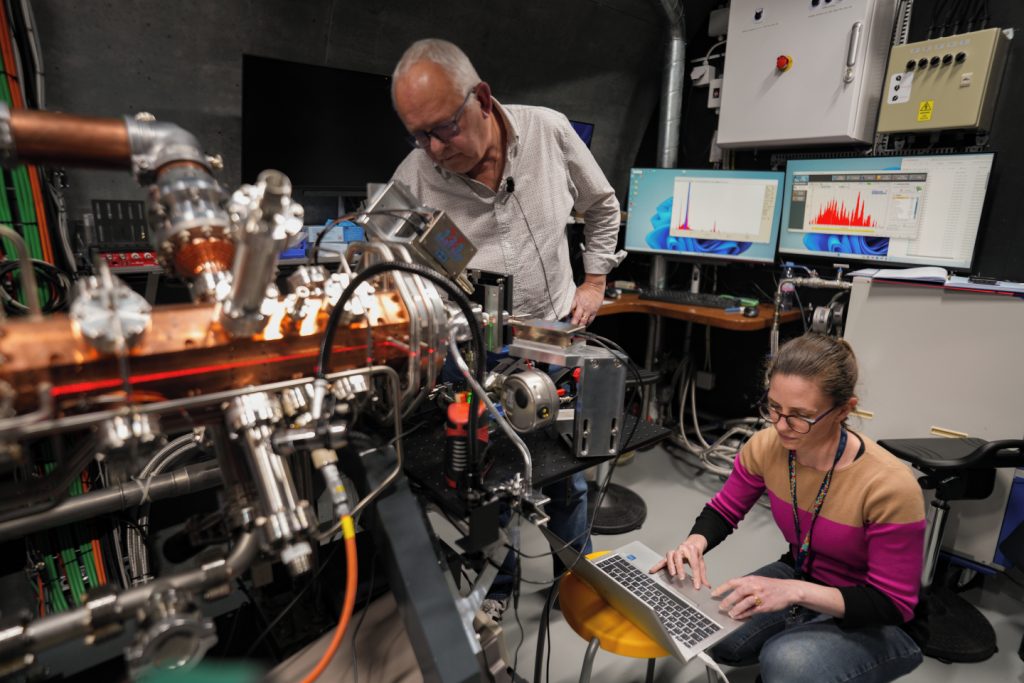The CERN Science Gateway has a Unique New Exhibit: a Working Mini Proton Accelerator

Beyond fundamental research, accelerators are well known for their contribution to medicine, particularly cancer therapy. But another exciting application of CERN accelerator technologies is in the field of cultural heritage. Particle physicists are called upon to collaborate with art historians to unlock the many secrets of ancient artefacts and verify their authenticity. As a result, accelerators can be found in museums – such as under the Louvre in Paris – , as well as at research institutes and hospitals.
One of the challenges is that accelerators are large, costly and complex pieces of machinery. But thanks to CERN’s RFQ (Radio Frequency Quadrupole) technology, smaller transportable accelerators are now possible. One such accelerator, the Experimental Linac for Surface Analysis (ELISA), can now be seen in CERN’s education and outreach centre, the Science Gateway.
ELISA is a one-metre-long version of the first component of Linac 4, the linear accelerator used to feed the CERN accelerator complex, and ultimately the Large Hadron Collider (LHC), with particle beams. By accelerating protons, albeit at a significantly lower energy than in the LHC, ELISA can analyse objects such as ancient art or archaeological samples. Focusing a proton beam on a sample causes its atoms to emit photons with unique wavelengths specific to its component elements, thus revealing a detailed profile of the sample’s composition. ELISA is similar to another mini accelerator called MACHINA, created in collaboration with INFN, which is soon to be used to study art works with Opificio delle Pietre Dure in Florence. These transportable accelerators have great promise for enabling analysis to take place in the field and for use by museums in areas where there is no access to an accelerator facility.
ELISA’s first task is to analyse paint samples which mimic ancient cave art without causing damage. This important attribute is being carefully fine-tuned via these experiments to optimise the accelerator for the future analysis of fragile objects.
However, the most surprising thing about ELISA is that the particle accelerator is conducting this real scientific research whilst being an exhibit at the Science Gateway. A first, which allows the general public to observe an accelerator in action during their visit, and to see first hand the impact of CERN’s technologies on all areas of society.